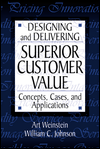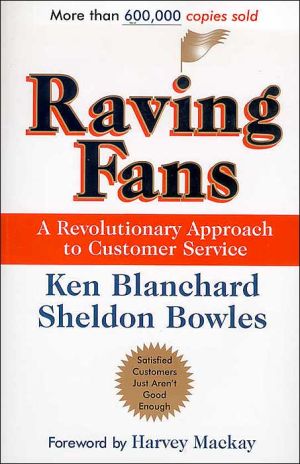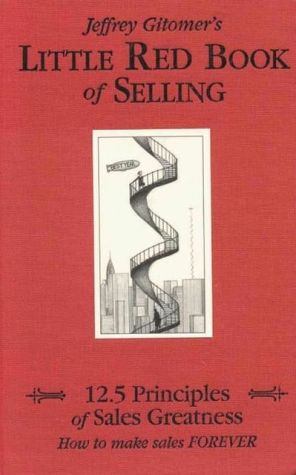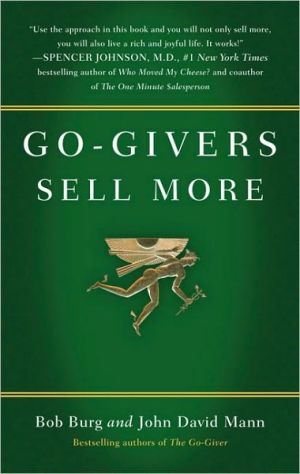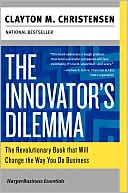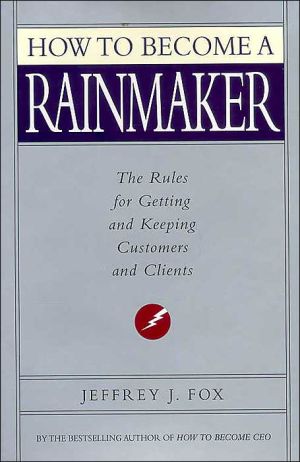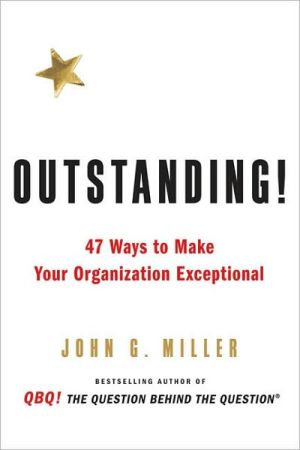Designing and Delivering Superior Customer Value: Concepts, Cases and Applications
Great companies don't just satisfy their customers, they strive to delight and amaze them. Designing and Delivering Superior Customer Value explains how to continually create customer experiences that exceed expectations. This turns buyers (try-ers) into lifetime customers.\ The emerging value paradigm is not only a new way to think about marketing, but a new business imperative in the 21st century. It is the strategic driver that differentiates great companies from the pack. Value connotes...
Search in google:
Great companies don't just satisfy their customers, they strive to delight and amaze them. Designing and Delivering Superior Customer Value explains how to continually create customer experiences that exceed expectations. This turns buyers (try-ers) into lifetime customers. The emerging value paradigm is not only a new way to think about marketing, but a new business imperative in the 21st century. It is the strategic driver that differentiates great companies from the pack. Value connotes many meanings - yet, it is always defined by the customer.This book stresses the service aspects of an organization - especially customer service, marketing, and organizational responsiveness, and how to create and provide outstanding customer value to the target market(s). With the integrated management perspective used by the authors, you will understand how to blend the delivery of service and quality, together with pricing strategies to maximize the value proposition. Those companies that embrace customer-driven value-creating methods will gain a competitive edge in the 21st century, those that do not will experience declines. This exciting new book is a guide to retaining your existing customers and to gaining loyal new customers.Features Booknews Provides marketing practitioners, managers and executives, and scholars with a guide to designing, implementing, and evaluating a customer value strategy in service organizations. A foundation section examines critical business issues such a creating value, customer orientation, and relationship marketing. Each chapter provides discussion questions. A second section offers 19 detailed examples of how successful organizations create value for their customers, plus case questions. Three more sections consist of condensed articles, exercises, and a customer value audit. The authors are professors of marketing at Nova Southeastern University. Annotation c. Book News, Inc., Portland, OR (booknews.com)
Chapter 1: Customers Want Top Value\ Consider the remarkable success of companies such as Arnazon.com, America Online, CarMax, Dell Computer, Kinko's, Starbuck's, and Yahoo!. These business pioneers have found better ways to create value for customers with changing needs and wants. Adaptable giants such as American Express, AT&T, Hertz, McDonald's, Marriott, Microsoft, and Wal-Mart have also benefited from customer value thinking. It has helped them design winning marketing strategies to maintain leadership positions in highly competitive markets.\ In the 1980s, the battle for customers was won or lost based on quality. As Total Quality Management (TQM) became the rage in business, quality gaps diminished, and companies focused on customer service. Enhanced customer value synthesizes and extends the quality and customer service movements and has emerged as the dominant theme for business success for 21st century companies.\ Managing customer value will be even more critical to progressive organizations in our service- and information-based economy. Innovative companies that create maximum value for their customers will survive and thrive; they will carve sustainable competitive advantages in the marketplace. Other firms, those not providing adequate value, will struggle or disappear.\ By examining relevant customer value, marketing, and services concepts and applications, this opening chapter accomplishes four objectives. First, we explain why customer value mist be the overall basis for business strategy. Second, we review the size and scope of the service sector and show how service products create value for customers. Third, we offer several key customer valueimplications for forward-thinking managers. We conclude the chapter by discussing the attributes of value-creating organizations.\ The Importance of Customer Value\ Great companies do not just satisfy customers; they strive to delight and "wow" them. Superior customer value means continually creating business experiences that exceed customer expectations. Value is the strategic driver that multinational companies, as well as entrepreneurial firms, utilize to differentiate themselves from the pack in the minds of customers.\ How is it that Lexus can sell sport utility vehicles for $60,000 and Taco Bell can offer meal combinations for less than $4.00, and both are considered good values? Value is the answer - and value is defined by your customers. Companies that offer outstanding value turn buyers ("tryers") into lifetime customers.\ What Does Value Really Mean?\ The concept of customer value is as old as ancient trade practices. In early barter transactions, buyers carefully evaluated sellers' offerings; they agreed to do business only if the benefits (products received) relative to the cost (items traded) were perceived as being a fair (or better) value. Hence, value is "the satisfaction of customer requirements at the lowest total cost of acquisition, ownership, and use." As an area of formal marketing study, value-based thinking has evolved over a half century; it originated at the General Electric Company in 1947.\ According to a dictionary definition, value means relative worth or importance. Furthermore, value implies excellence based on desirability or usefulness and is represented as a magnitude or quantity. On the other hand, values are the abstract concepts of what is right, worthwhile, or desirable. Management's values impact how an organization creates value and, ultimately, its success. The legends about the Frito-Lay sales rep stocking a small grocery store's potato chip rack in a blizzard and Art Fry's intrapreneurial initiative that brought the Post-It to 3M reinforce organizational cultures.\ A value-driven marketing strategy helps organizations in ten areas: (1) understanding customer choices, (2) identifying customer segments, (3) increasing competitive options (for example, offering more products), (4) avoiding price wars, (5) improving service quality, (6) strengthening communications, (7) focusing on what is meaningful to customers, (8) building customer loyalty, (9) improving brand success, and (10) developing strong customer relationships.\ According to Woodruff and Gardial, a three-stage value hierarchy exists which consists of attributes, consequences, and desired end-states. These levels of abstraction describe the product/service, the user/product interaction, and the goals of the buyer (person or organization), respectively. For example, a new-car buyer may seek attributes such as comfortable seating, an easy-to-read instrumental panel, smooth shifting, a Consumer Reports endorsement, no pressure sales tactics, and a good service/warranty program. At higher levels of abstraction, buyers may want driving ease, no hassles, and reliability (consequences), and ultimately peace of mind (desired end-state).\ The Heart of Value: Product Quality, Service, and Price Customer value can be expressed in many ways and is reviewed next. The approach known as QSP states that value is primarily a combination of quality, service, and price. This set of three core ingredients product quality, service quality, and value-based prices - is called the customer value triad. The triad provides a solid springboard for formulating an initial business strategy.\ Designing and delivering superior customer value has become a mandate for management. In choice-filled arenas, the balance of power has shifted from companies to value-seeking customers. Value-creating enterprises often differentiate themselves on one key attribute but must meet acceptable threshold levels with respect to quality, pricing, and service; competition provides little room for weakness in any area.\ For example, Hewlett-Packard (H-P) is obsessed with new product development and product quality, Nordstrom is renowned for unparalleled customer service, and Wal-Mart stresses "Everyday Low Prices". While H-P, Nordstrom, and Wal-Mart have each created reputations due to a singular attribute, successful retailers such as Barnes and Noble...
Pt. 1Customer Value ConceptsCh. 1Customers Want Top Value3Ch. 2Being Customer Oriented17Ch. 3Process and Customer Value31Ch. 4Defining and Refining the Value Proposition51Ch. 5Defining and Managing Service Quality63Ch. 6Communicating Value Through Price83Ch. 7Strategies for Adding and Promoting Value101Ch. 8Maximizing Value Through Retention Marketing117Ch. 9Creating Value Through Customer and Supplier Relationships131Pt. 2Customer Value CasesAnalyzing Business Cases: The Customer Value Funnel Approach153Case 1. AAA Motor Club - Responding to Change159Case 2. Ethyl Corporation - Becoming Customer-Oriented169Case 3. Glaxo Wellcome, Inc. - Internal Marketing Leads to Customer Responsiveness175Case 4. The Grateful Dead - Customer Loyalty and Service Quality181Case 5. Harrah's Entertainment - Brand Building189Case 6. International Food Ingredients Supplier - Customer Value Analysis195Case 7. Larry Bird's Home Court - Brand Repositioning205Case 8. Motorola - Supply Chain Management215Case 9. Nantucket Nectars - Perceived Quality221Case 10. National Association of Small Business Owners - Customer Retention231Case 11. Par Value - Enhancing Customer Value239Case 12. Pizza Hut - A Customer Loyalty Program261Case 13. Publix Super Markets - Customer Intimacy271Case 14. Rubbermaid - Market Orientation279Case 15. The U.S. Newspaper Industry - Changing Markets289Case 16. StatePride Industrial Laundry - Value Chain Analysis297Case 17. Southwest Airlines - Value-Added Services305Case 18. Teleplaza - Competitive Orientation311Case 19. Time Insurance - A Study of Process Quality Improvement319Pt. 3Customer Value Applications327Pt. 4Customer Value Abstracts339Pt. 5Customer Value Assessment Tool (CVAT)371Index381
\ BooknewsProvides marketing practitioners, managers and executives, and scholars with a guide to designing, implementing, and evaluating a customer value strategy in service organizations. A foundation section examines critical business issues such a creating value, customer orientation, and relationship marketing. Each chapter provides discussion questions. A second section offers 19 detailed examples of how successful organizations create value for their customers, plus case questions. Three more sections consist of condensed articles, exercises, and a customer value audit. The authors are professors of marketing at Nova Southeastern University. Annotation c. Book News, Inc., Portland, OR (booknews.com)\ \
